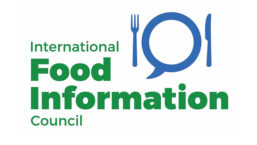Home » consumer trends
Articles Tagged with ''consumer trends''
Purdue University survey shows food spending per person has increased 15% since January 2022
Read More
Navigating the Rising Cost of Food: Trends in 2024’s At-Home Meals and Frozen Foods
As consumers seek value amid rising food costs, frozen meals and pizzas evolve with creative flavors, healthier options, and global inspirations
October 9, 2024
Formulators Embrace New Sugar Reduction Strategies
Innova Market Insights' annual consumer trend surveys demonstrate growing consciousness among US consumers to limit sugar intake
October 8, 2024
Consumer Confidence in Food Safety Declines
International Food Information Council releases latest consumer insights on food ingredient safety
September 25, 2024
Circana Research Reveals 86% of Eating Occasions Sourced from Home Over Past Year
Despite easing inflation, ongoing economic challenges drive shifts in consumers’ eating patterns both in and away from home
September 6, 2024
Revealing the Future of Dinner
Circana reports on how quick meals and invested occasions define consumer habits
September 6, 2024
The Future of Private Label Looks Bright
Fifty-three percent of consumers choose where to shop based on store brand, projected to increase to over 60%
September 3, 2024
Tracking the Evolution of Fiber in Gut Health Formulations
Fiber discussions extend to prebiotics, broader better-for-you applications
September 3, 2024
How Shoppers Control Grocery Spending
FMI Research suggests that consumers seek deals and shop around to address inflation-related impacts on food prices
August 30, 2024
What are the Top Sustainable Consumer Behaviors in 2024?
Mintel uncovers new trends and opportunities in Global Outlook on Sustainability report
August 29, 2024
Unlock the Future of Food and Beverage Innovation
Are you a leader in research & development? Stay ahead of the curve with Prepared Foods, the premier source of information and insights for today's trend leaders and taste-makers in food and beverage manufacturing.
JOIN TODAYCopyright ©2025. All Rights Reserved BNP Media.
Design, CMS, Hosting & Web Development :: ePublishing









